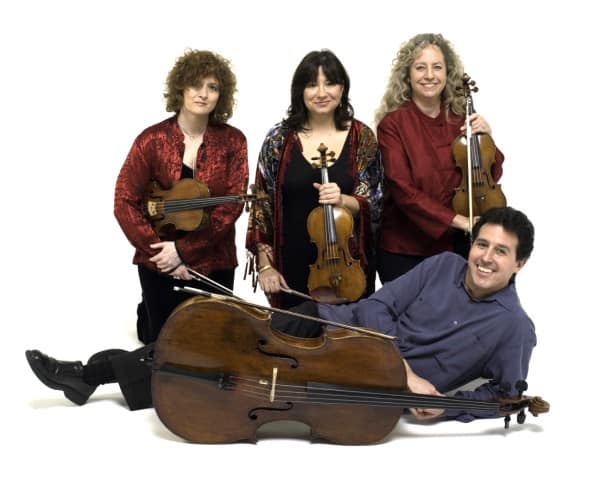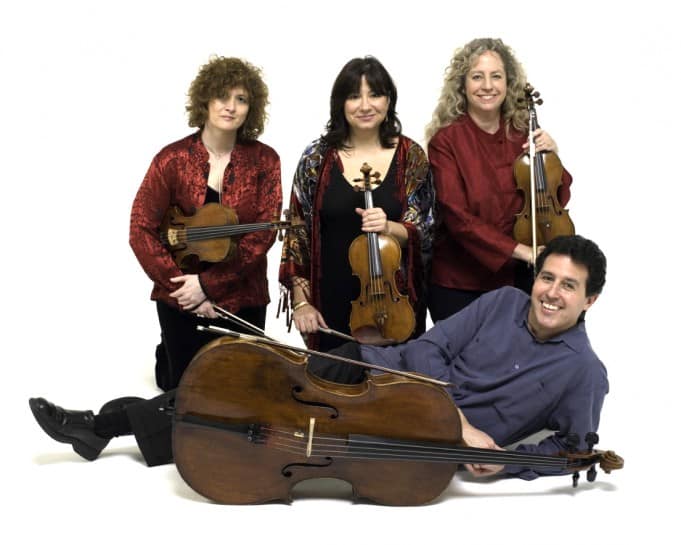
The last time I spoke to Susan Freier of the Ives Quartet, she began to explain how bowing techniques differ for baroque music. This began a thread that followed me through my recent review of the Philharmonia Baroque Orchestra and continued as I read John Marchese’s gem of a book, The Violin Maker. Not being a string player, I’m always open to learning about anything that helps me listen more critically, and conversations with Freier opened a small window into that process.
This conversation reached full throttle during the first salon of the Ives Quartet season last Sunday during which Bettina Mussumeli, Jodi Levitz, Stephen Harrison and Susan Freier spoke at length about Haydn’s Opus 50. Rather than deconstruct the composition, members of the quartet addressed differences in how this piece was played twenty years ago vs how it is played today. When Stephen Harrison opened the conversation noting that twenty years ago, sustain was king, and students were urged to play with a continuous vibrato like Jascha Heifetz, I positively began to quiver because I’d just been listening to Joshua Bell comment on what you do when you stop playing vibrato.
Most people recognize vibrato when they hear it. The term is used to describe pulsating variation in pitch when playing or singing. A deep throaty opera singer usually employs vibrato while singing, as do most string instruments. It’s so easy to confuse vibrato with tremulo (pulsating changes in volume) that the terms are often used interchangeably. The reason for this confusion became apparent as Harrison pointed out that twenty years ago, the message was to play LOUD. However, when string players boost their volume by playing vibrato, they are not necessarily playing the way the music was originally envisioned.
Volume and vibrato become an issue for musicians because conditions today are far more demanding than when this music was originally written. Freier noted that when the quartet is on tour in Europe, they tend to play small venues with lots of marble that reflect the sounds, rather than large heavily carpeted and curtained venues that just eat up them up. The acoustics of these venues are more consistent with what this music was written for.
If playing vibrato is not an authentic option for today’s performers, the question arises what a musician is to do when faced with the need for volume. Mussumeli provided a partial answer to this as she distinguished between old instruments with modern setups and modern instruments with old setups. By changing strings from gut to titanium, allowing more pressure at the bridge and varying the fingerboard, one ultimately arrives at a more authentic (albeit less resonant) sound in a modern venue. Mussumeli’s observations reminded me of Sam Zygumtowicz’s line in The Violin Maker. Commenting on instruments made by Stradivarius and Guarneri, he says “It’s like those old American cars in Cuba that were there before Castro, and are still running. They’re classic Chevy’s or Fords, but chances are that most of the parts are different.” It’s only through what Mussumeli termed a “modern set up” that we use these instruments today. She continued her discussion by presenting variations in the evolution of the bow. I confess, I got lost here as Mussulemi presented so many bows in rapid succession that I was unable to follow her completely.

The Ives Quartet will be presenting a second Salon in April. If the excellent discussion that took place Sunday is any indication, this second Salon should be equally inspiring.


